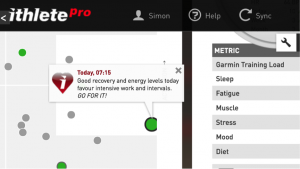Who, what & why?
This research summary will bring together two pieces of work, both looking to make confident conclusions on the benefits of high intensity interval training (HIIT) on recreational runners.
One is a review paper from experienced researchers in Spain. They looked at 23 different studies on the short and long term effects of HIIT training (HIIT) on runners.
The second is a new study from Czech researcher Lukas Cipryan on how HIIT training affects runners with differing levels of training experience. This one used heart rate variability (HRV), as well as markers of inflammation and muscle damage.
Everyone who does regular exercise has heard of, or even tried HIIT. It’s known that the high intensity and muscle fiber involvement in HIIT stimulates adaptations leading to performance improvements in spite of the intervals lasting only a short period (30s – 4 mins). But is it a better use of your precious training time than longer sessions of continuous running? An important question for runners is ‘am I more likely to get injured with one type or the other?’
What did they do?
In the first study, they identified no less than 783 relevant studies, of which 23 met the stringent quality criteria required for inclusion. They looked at runners who were both already doing at least one HIIT session per week, as well as studies that prescribed HIIT training to runners who were not already doing it.
In the second study, 30 volunteers performed an HIIT session of 6 x 2 mins intervals as a one off over 30 mins in a lab setting. The volunteers’ responses were measured before, during and after the session to see how much their level of fitness affected how their bodies coped with the shock!
What did they find?
The review study came to a number of findings about HIIT:
- HIIT recruits more muscle fibers of different types than continuous running, especially in the hamstrings.
- It doesn’t alter running style, and does improve running economy.
- HIIT does less harm to muscle function than continuous intense running.
- Intervals at or above VO2 max improve performance much more than intervals significantly below maximum aerobic speed.
- Adaptations to muscle oxidative capacity help to preserve muscle function during future intensive sessions.
The second, lab based study, the responses of the volunteers are shown below:

Interesting to note is that the untrained volunteers managed higher peak heart rates during the intervals (A), but those heart rates produced 5km/hr less treadmill speed, and lower oxygen use (B).
Chart A is a good example of the effect known as ‘cardiac drift’, i.e. that as the session progresses, higher heart rates are needed to produce the same work output (measured as power or speed). That’s why many athletes prefer to use power or speed rather than HR to set their interval pace. What’s also interesting to see is the type of fuel used starts as very carbohydrate intensive (lactic anaerobic muscle) and becomes less anaerobic (C).
Taking a look at their HRV, you can see several interesting effects:
- The volunteers’ Pre test HRV increased with their fitness level. To translate to ithlete HRV, simply multiply by 20. So the well trained runners had HRV over 90, whereas the untrained ones were approx. 75 on the ithlete scale (these were young 25 yr old people, so their HRV baselines were quite high anyway).
- All showed a big dip to < 40 on the ithlete scale immediately after the HIIT, showing that their bodies had all found this a stressful exercise!
- The untrained volunteers HRV recovered much more slowly than those who were moderately or well trained.

What does it mean?
Even trained endurance runners shouldn’t fear doing a couple of HIIT sessions every week. They are time efficient, and there is no evidence that they increase injury rates. In fact the opposite may be true, other studies have found relationships between injury rates and total time spent running per week, which can be reduced when some continuous running sessions are replaced with HIIT.
There is some evidence from both studies that HIIT produces more favorable hormone responses for muscle adaptation and performance improvement than continuous running.
The best results seem to be achieved using combinations of HIIT and continuous running. One study found a 7% improvement in 3km race performance when 4 sessions of HIIT were performed at maximum aerobic speed (VO2 max) over a 10 week period.
Recommendations
The paper’s authors suggest the following combination:
- At least two sessions per week
- At least 10 mins of total high intensity time per session
- Short intervals of around 1 minute with 1-2 mins between intervals
- Intensity needs to be the maximum pace sustainable to be effective
Although short, the intensity of the intervals requires readiness, so we recommend performing them on ithlete high HRV ‘Go for it’ days. Less well trained runners will require more time to recover and get back into the green than better trained runners. The days ithlete gives you the ‘Go for it’ message you can be confident it’s a good day for a HIIT session; your body is well prepared and set to recover well afterwards too!

You may also be interested in reading 5 Benefits of High Intensity Interval Training (HIIT).

I did enjoy this article even though I am a cyclist not a runner. I have been doing interval sessions for many years, but this sets out clearly the minimum required which helps tremendously. Thank you.
Hi Sonja – likewise! I’m also a cyclist but the duration & intensity should apply the same.